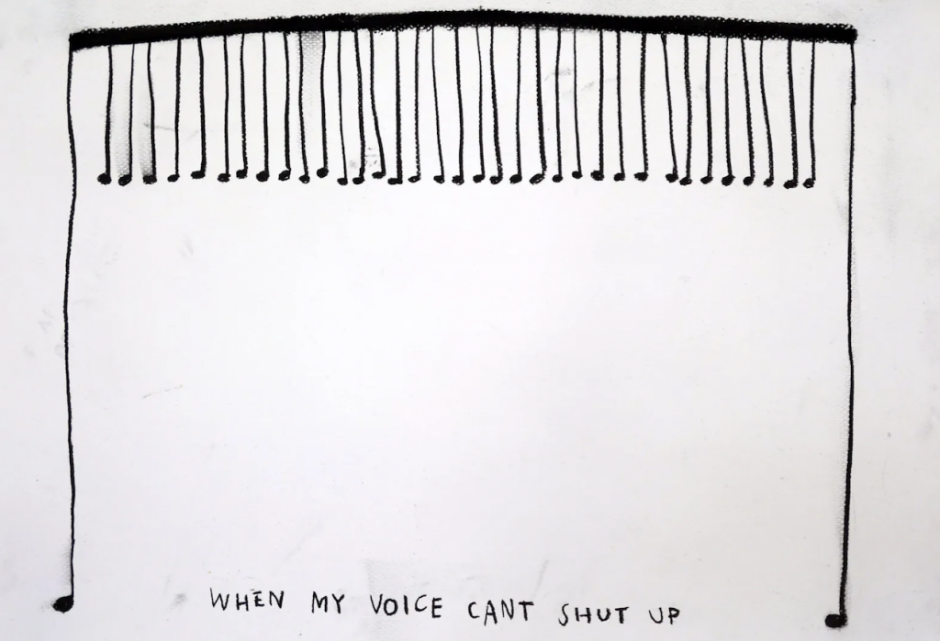Unstable Concepts – A Cross-Year Lecture Strand Experiment
Teaching Context
I’m a 0.8 Senior Lecturer on Y3 of the BAFA course at Chelsea College of Arts. I’m a Tutor Group Leader to around 30 students and offer general support to our Y3 160+ students. I co-run Year Meetings, deliver lectures, AV cultures, Studio Support, and co-lead our units. This case study focuses on one strand of the cross-year lectures, an optional series of four strands for all students (Y1, Y2, Y3).
Evaluation of the Issues
Every year, we run four cross-year lecture strands over four weeks. It is a rare opportunity to program teaching across the cohorts. They attempt to hold and develop students’ interests more in-depth by allowing them to choose a strand and encouraging them to foster a sustained engagement with the theme/method/question throughout the sessions. (Hughes, 2014)
Attendance issues in our lecture programmes have accelerated since Covid-19. Numbers tend to plunge after the February Activities Week break. Over 500 students in the course could choose among the lecture strands, but in the previous year, for example, the strand run by Year 3 started with around 40 students and finished with 4. We’ve decided to use this series to take pedagogical risks and test new models for our usual lectures.
Implications and Specific Actions
Unstable Concepts is a response to the lack of interest and resistance students seem to have towards theory. (Johnston, 2025) Most students seem to think that theory is not for them or can’t see its “usefulness”.(Tompkins, 2016) Our current students resist any idea of preparing by reading/watching/listening materials, so I’m testing a format that combines the preparation with the discussion. The guest speakers introduce theories/concepts they have been developing for about 20 minutes. Afterwards, I’ll lead a conversational/open discussion with students and the guest. The whole session lasts an hour and a half.
The guest speakers were theorists and BA lecturers. They engaged closely with lived experience and ethnography to allow students’ afraid’ of theory to realise they could speak from where they are. Since students’ levels vary across years and cohorts, the more advanced students could help model a more active and engaged relation to theory. I meant to create an environment where we learn to take intellectual risks and model productive and unproductive misunderstandings.
Next Steps
The students were very engaged in the discussions across cohorts, and although some tensions appeared, we managed to disentangle them as a group during the different sessions. We just finished the third session and retained a cohort of roughly 40 students per session across years, above the 32 initially signed up. Some of the learnings we aim to take forward for the next academic year are:
The short introduction followed by a discussion model: Students feedbacked that they prefer to follow up with the texts after the sessions have piqued their interest and given them an entry point.
A generational shift on mediated experiences: Our first session was in the lecture theatre, but the speaker joined online. I had a microphone to give students for questions. This was an incredibly active discussion.
A discussion disguised as a lecture: Joining the discussion with the speaker has meant that we sometimes disagree, or I can be called in from a misunderstanding. Modelling disagreement and misunderstandings as productive and enjoyable seems to have helped the engagement. (Mattern, 2023) No session ended before students ran out of questions.
Bibliography
Hughes, D. (2014) ‘Dwelling as an approach to creative pedagogy’, Art, Design & Communication in Higher Education, 13(1), pp. 73–85. Available at: https://doi.org/10.1386/adch.13.1.73_1.
Johnston, M. (no date) ‘Wilton S. Wright, “Rewriting Resistance to Social Justice Pedagogies” (Lexington Books, 2024)’. Available at: https://newbooksnetwork.com/rewriting-resistance-to-social-justice-pedagogies (Accessed: 10 February 2025).
Mattern, S. (2023) ‘Modeling doubt: a speculative syllabus’, Journal of Visual Culture, 22(2), pp. 125–145. Available at: https://doi.org/10.1177/14704129231184553.
Tompkins, K.W. (2016) ‘We Aren’t Here to Learn What We Already Know’, Avidly, 13 September. Available at: https://avidly.lareviewofbooks.org/2016/09/13/we-arent-here-to-learn-what-we-know-we-already-know/ (Accessed: 3 February 2020).
